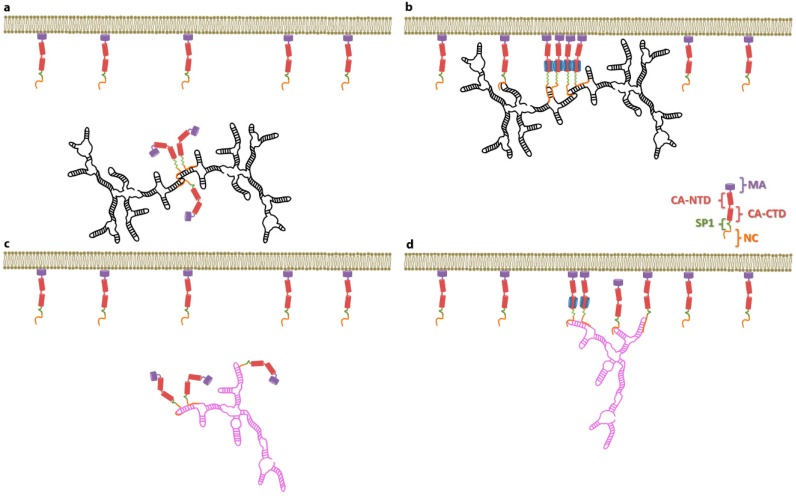Figure 4.
Schematic representation of the binding of HIV-1 Gag to the dimeric HIV-1 genomic RNA (gRNA) (a,b) and to non-Ψ RNA (c,d). (a) In the cytoplasm Gag binds to the HIV-1 gRNA by recognizing the RNA dimeric interface. Binding of Gag to Ψ increases the local concentration of Gag, thus promoting a conformational change in the SP1 domain from a random coil to an α-helix (green portion of Gag); (b) Once the HIV-1 Gag–dimeric gRNA complexes are bound to the plasma membrane, the specific Gag–RNA interactions promote a conformational change in Gag that enables high-order Gag–Gag interactions (blue interface); (c) In the absence of the HIV-1 gRNA Gag binds to mRNAs; however, because these interactions are non-specific, a higher Gag concentration is required to induce the conformational change in Gag; (d) When Gag–non-Ψ RNA complexes are bound to the plasma membrane, the local concentration of Gag is high enough to promote high-order Gag–Gag interactions. MA: matrix; CA-NTD: N-terminal domain of the capsid; CA-CTD: C-terminal domain of the capsid; SP1: spacer 1; NC: nucleocapsid.

